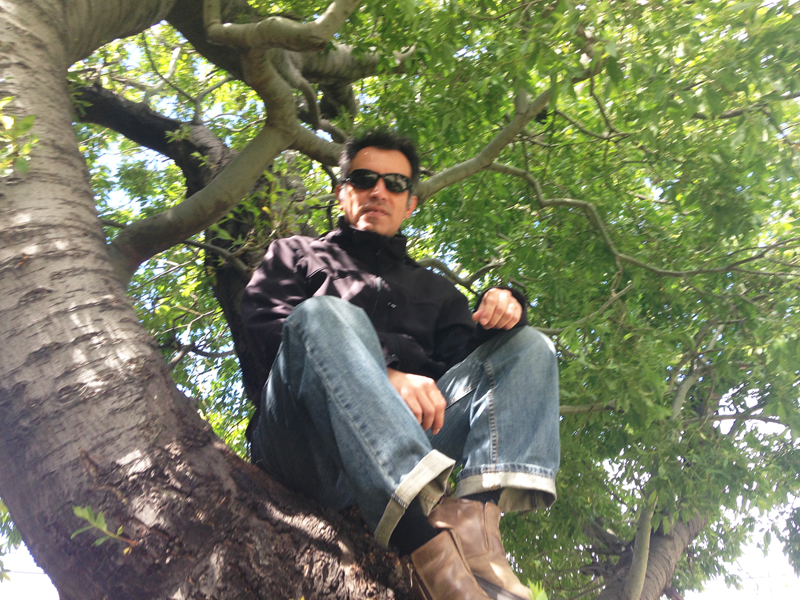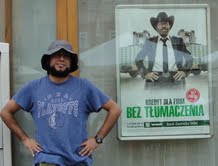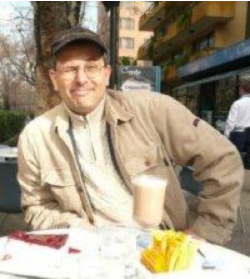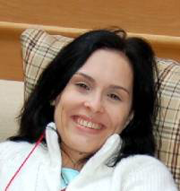
PhD: Pontificia Universidad Católica de Valparaíso.(2010)
Research Area: Inflation; reheating; dark energy (DE); dark matter (DM); DE-DM interaction; geodesics; tests of general relativity; exact solutions
Publications: INSPIRE
Telephone: (+56 32) 299 5557
email: jose.villanuevalob at uv.cl
Página web: www.dfa.uv.cl/~jose
About my research: My main research areas are the theory of gravitation and cosmology. In gravitation, my interest resides in the study of the motion of particles (neutral and electrically charged) across different space-times, putting special attention on the classical tests of the general relativity to compare it with availables observational data. In cosmology, I focus on the study of the dynamic behavior of the universe at different epochs, especially in the inflationary era and the accelerated expansion regimen, using alternative models which are tested using the most current data available.
Teaching: Classical Mechanics, Statistical Mechanics, Waves and Optics; Laboratory of electromagnetism; Cosmology; General Relativity; Nuclear Physics; Physical Processes in Astrophysics.
See my research in: Cosmology - Gravitaction

PhD: Universidad Federico Santa María (2009)
Research Area: Gauge / Gravity Dualities, Hadron Physics, AdS / QCD
Publications: INSPIRE
Telephone: (+56 32) 250 8228
email: alfredo.vega at uv.cl
About my research: Application of Gauge / Gravity dualities in Hadronic Physics in the Bottom - Up approach using AdS / QCD models as well as Light Front Holography. Study of very energetic Cosmic Rays and some aspects of hadronic phenomenology using quark potential models.s.
Teaching: Mechanics, Mathematical Methods of Physics I and II, Contemporary Physics.
See my research in: Particle Physics - Gravitation

PhD: Georg-August University of Goettingen, Germany (2001)
Research Area: compact binary evolution, white dwarfs, protoplanetary disks, planet formation.
Publications: ADS
Telepone: (+56 32) 299 5518
email: This email address is being protected from spambots. You need JavaScript enabled to view it.
About my research: My main research areas are the evolution of close compact binary stars and protoplanetary disks. In both fields I combine theoretical modeling with observational surveys to constrain crucial parameters. For details see links to protoplanetary disk and compact binary star group.
See my research in: Cataclysmic Variables - Evolution of Close Compact Binary Stars and SN Ia Progenitors - Substellar Objects - Massive Stars - Protoplanetary Discs - Variability (Astrostatistics)

Dr.rer.nat.: Ruhr-Universität Bochum, Alemania (Alemania).
Research Area: Cataclysmic Variables, Binary Stars, Novae
Publications: ADS
Telephone: (+56 32) 299 5551
email: claus.tappert at uv.cll
About my research: I am mainly working on Cataclysmic Variables (CVs). These are close interacting binary stars, with the primary component (the more massive one) being a white dwarf, and the secondary component usually being a late-type (K-M) star, that is on, or at least close to, the main-sequence. The latter star transfers matter via Roche-lobe overflow into the gravitational regime of the primary star. Depending on the strength of the white dwarf's magnetic field, this matter is accreted by the primary either via an accretion disc, or via accretion columns that form along the magnetic field lines (in case of a strong field). While I have dabbled in several aspects of CV research, my current interest concerns their evolution, and specifically the role of the nova eruption in this.
See my research in: Cataclysmic Variables and Novas - Variability

PhD: PhD en Ciencias Físicas, Instituto de Astrofísica de Canarias, España (2002)
Research Area: observational cosmology, strong gravitational lensing, microlensing, active galactic nuclei, accretion disks, galaxy groups and clusters, high redshift galaxies, dark matter, spectroscopy
Publications: ADS
Telephone: (+56 32) 250 8461
email: veronica.motta at uv.cl
About my research: My research interest is related to the dark matter content in our universe, both at small and large scale. I use gravitational lensing (micro, strong, and weak) in areas as different as the cosmological distance scale, the large scale matter distribution in the universe, mass distribution of galaxy groups and clusters, the physics of quasars, and galaxy structure. I take advantage of multi-wavelength observational data and theoretical models to constrain the properties of gravitationally bound objects at different redshifts.
Teaching: MSc. course, Advanced Course on Extragalactic Astrophysics, PhD.
course, thesis project
See my research in: Gravitational Lensing - Active Galactic Nuclei





